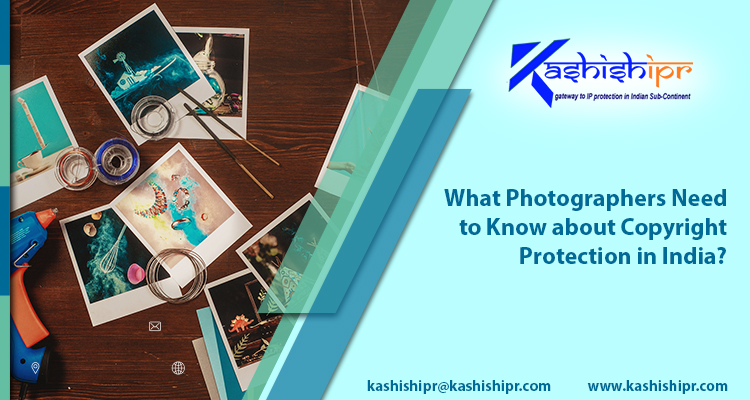What Photographers Need to Know about Copyright Protection in India?
 Posted On
Posted On
Modern technology has turned taking photos, editing them, and then sharing them easier than ever. However, this wonderful thing often works as a double-edged sword for photographers and their subjects. There are several misconceptions about the Intellectual Property (IP) law emphasizing who owns photos, what sorts of photos are fine to take, and what one can do with his/ her photos. As Privacy and Copyright Law related to photography is complicated and intricate, it usually raises plenty of myths and misunderstandings. Hence, learning regarding the basics of laws concerning photography is more vital than ever before.
No matter whether you’re a professional or just a hobbyist, the law applies to you. Therefore, breaking the law by either taking or sharing a photo that’s not allowed, or illegally using someone else’s photo, can make you fall in a lot of trouble. It can cost you thousands of dollars or rupees as legal penalties. Here, we’d provide you with all the statistics that every photographer should know about Copyright Protection in India.
How Can Photographers and Photographs Be Protected in India?
In India, photographs are protected as artistic work under Section 2 (c) of the Copyright Act 1957. Since the quality of photos is immaterial to qualify as an artistic work, a bad photograph can also be protected. The essential aspect for the protection of a photograph under this section is that it must be an original work. As per section 25 of the Copyright Act, the photographs can receive protection for 60 years from the date of publication. It means the date on which one has taken the photo; there’s no need to get it actually published in any magazine.
The copyright term varies in different countries. For instance, the duration of Copyright Protection in the US and EU is 70 years, while the Berne convention provides copyright protection for 50 years.
As far as the Indian Copyright Act is considered, it is in obedience with various international treaties like the Universal Copyright Convention 1951, the Agreement on Trade-Related Aspects of Intellectual Property Rights (TRIPS) Agreement of 1995, and the Berne Convention for protection of Literary and Artistic works 1886. Just like the International Copyright Order has been passed to secure the copyright in member nations of the convention and agreement, the foreign artistic works are provided protection in India. Typically, the creator is the first owner of the copyright on a work created by him/ her according to the Indian Copyright Act. However, in the case of photographs, the photographer is considered to be the first owner unless there’s an agreement to the contrary. It means if your friend takes a stunning photograph, then he/ she owns the copyright to that particular image even though you are the owner of the camera used here. Note that the rights of the Photographer include the right to reproduce the photographs, to make any change in them, publish them, etc.
Is it Mandatory to Register the Copyright in Photographs?
Since copyright protection commences as soon as the work gets created, Copyright Registration in India is recommended but not mandatory. So it’s completely the photographer’s choice whether to get his/ her work registered as copyright or not. Under the Copyright Law of India, the expression of an idea is copyrightable but not the idea per se. For example, if you take a photo of the sunset view and someone else also takes a picture of the same view, you can’t stop him/ her. Nonetheless, if he/ she uses your photo of the sunset on his/ her product, then you possess the right to stop him/ her under Section 51 of the Copyright Act intended to protect photographers’ copyright infringement. The Courts in India also have held that the publication of a photograph by any other photographer without the original photographer’s permission by copying it from any published material is considered as Copyright Infringement. Nevertheless, individuals or groups other than photographers may use the published photograph without any intention of obtaining undue profits from it. If a person wants to use photographs for purposes like teaching, research, legislative, judicial proceedings, then he/ she is allowed to do so without the prior consent of the photographer, because this type of use falls under the principle of fair use.
The Copyright Act 1957 is a remarkable Act that effectively defends the Photographer’s Copyrights in India. It ensures protection for not just the traditional paper photographs but online photographs as well even though not expressly mentioned. With a robust legal base to protect copyright, the existing law can competently overwhelm the challenges posed even by the rapidly advancing technology. Nonetheless, to ensure comprehensive protection, all (photographers and those who wish to use the photographs) should be aware of Copyright Law and Act in an appropriate way. Hopefully, this article has provided you with a lot of useful information. If you are still looking for any other statistic related to copyright protection in India, it will be better to consult a deft IP Attorney. You can also look for an experienced Intellectual Property Law Firm in India. For more visit: https://www.kashishipr.com/
Don’t forget to follow us on social media:
Facebook – https://www.facebook.com/kashishipr/
Twitter – https://twitter.com/kashishipr
Linkedin – https://www.linkedin.com/company/kashishipr/
Pinterest – https://www.pinterest.com/kashishipr/
Tumblr – https://kashishipr.tumblr.com/
